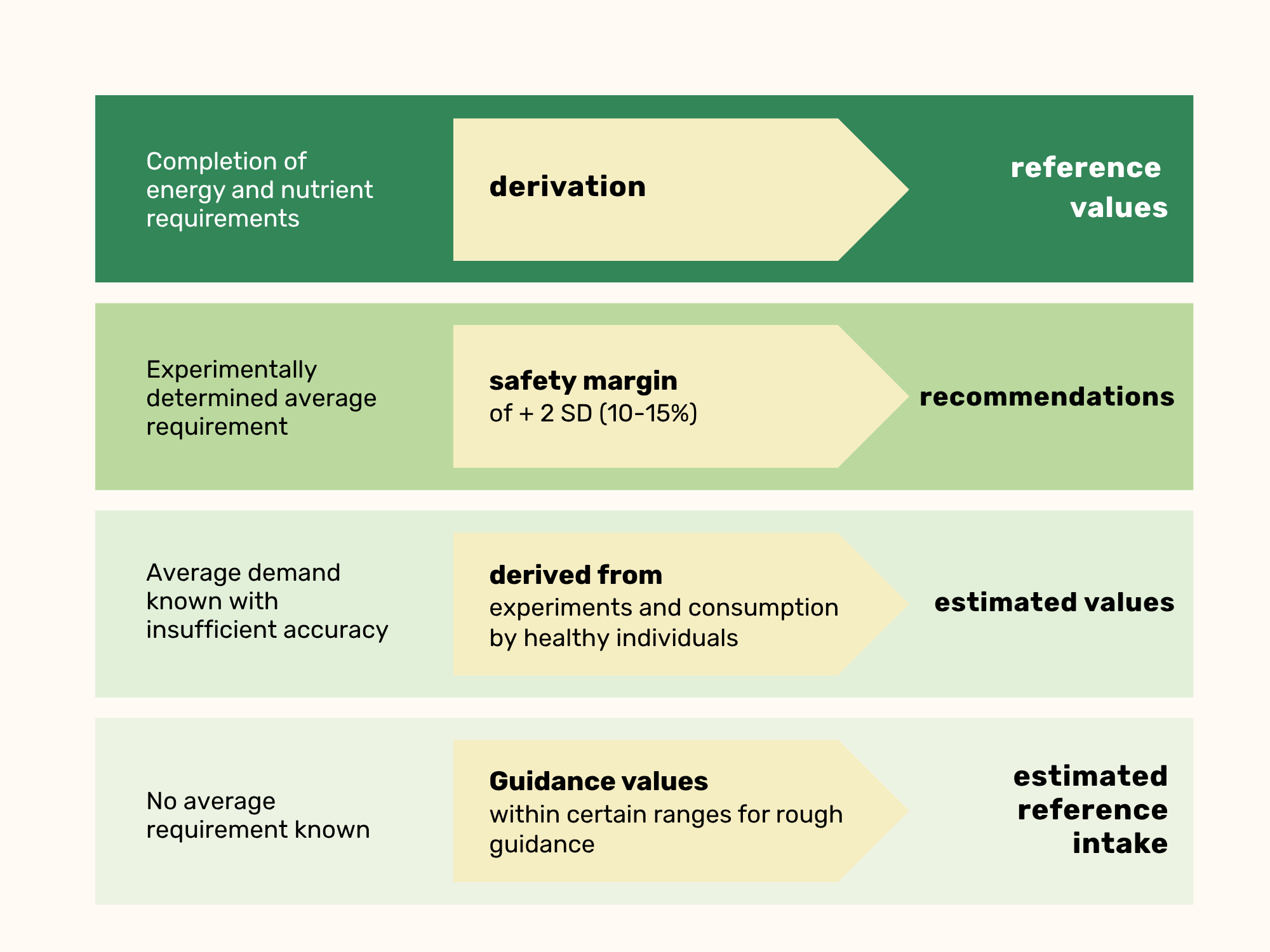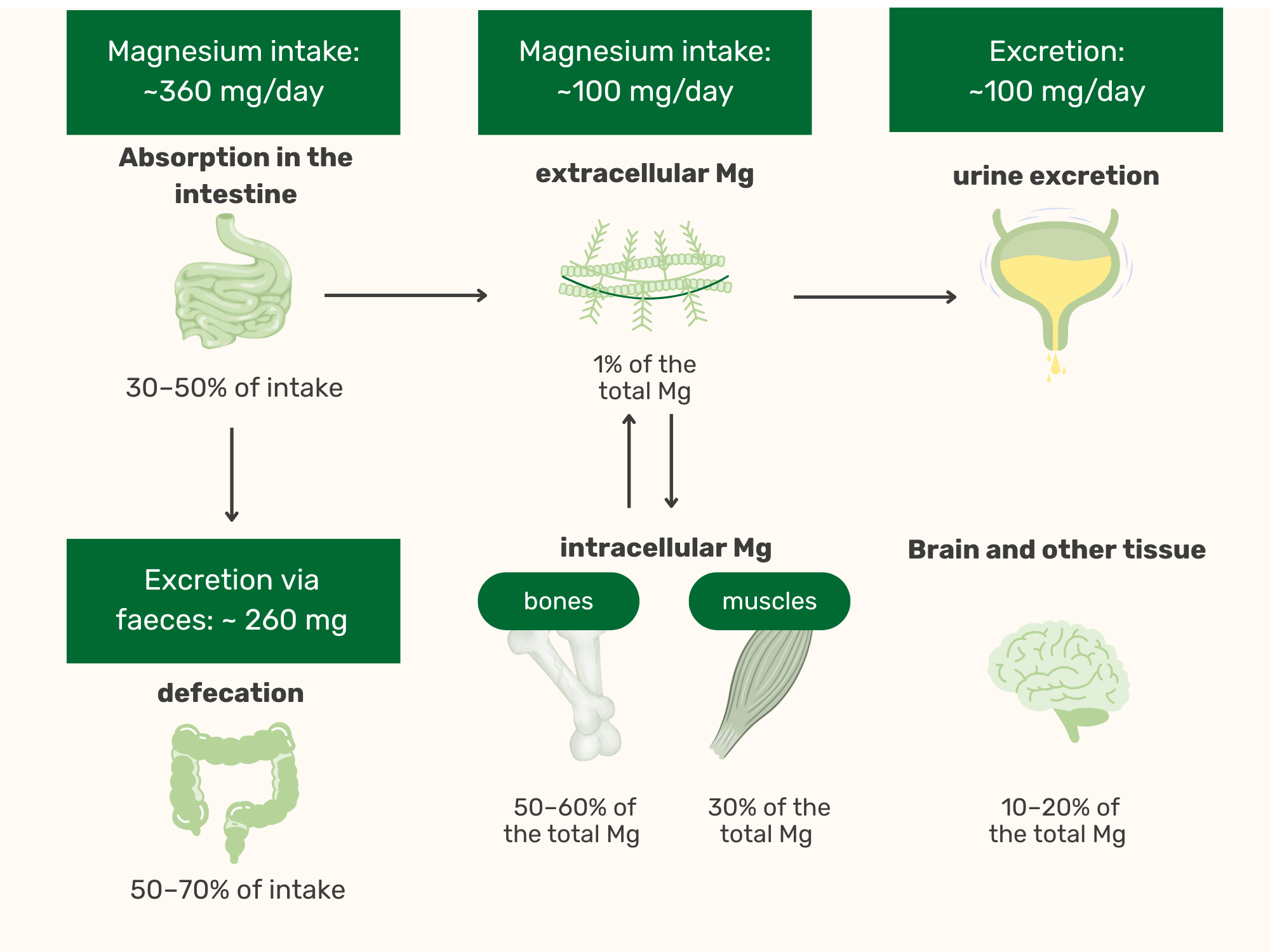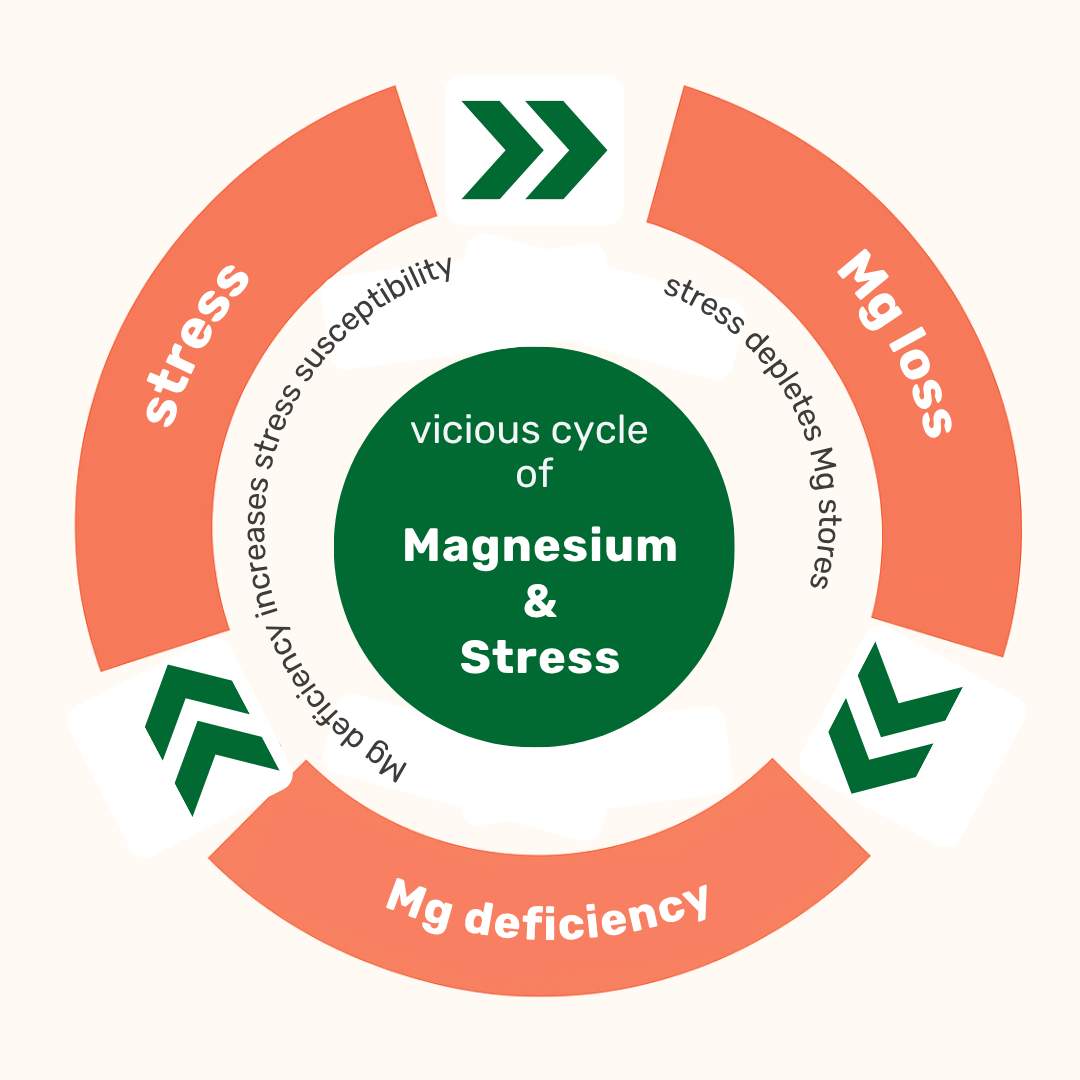Magnesium for Athletes: Effects, Needs, and Supplementation Scientifically Explained
Magnesium is an essential mineral and cofactor in over 300 enzymatic reactions in the human body. It plays a central role in processes such as energy metabolism, muscle and nerve function, bone health, and the regulation of the cardiovascular system (1). Nevertheless, this does not automatically mean that everyone should supplement with magnesium – even if this is often suggested on social media.
In this article, you will learn what benefits magnesium truly offers athletes, when supplementation is advisable, and which forms are best absorbed.
Physiological Functions of Magnesium
Magnesium is the second most abundant intracellular cation (positively charged when dissolved in liquid) and is involved in numerous central processes:
- Energy Metabolism: Magnesium stabilizes ATP (Mg-ATP complex) and is thus essential for all ATP-dependent reactions (1)
- Nervous System: Modulates NMDA receptors and promotes inhibitory GABAergic pathways – thus dampening neuronal hyperexcitability (2)
- Muscle Function: Enables muscle relaxation after contraction and regulates calcium homeostasis (1)
- Bone Health: Approximately 50–60% of total magnesium is stored in the skeleton, where it performs structural functions and serves as a reservoir for extracellular Mg balance (1)
- Immune and Cardiovascular System: Acts as a natural calcium channel blocker, influencing vascular tone, heart rhythm, and blood pressure (3)
Current Magnesium Recommendations from the DGE
The DGE specifies an estimated value of 350 mg/day for men and 300 mg/day for women for adults (4). These values are intended to ensure the supply for approximately 97% of the population. Unlike other nutrients, these are not precisely calculated requirement values, but estimates, as the data available for accurate quantification of the requirements is insufficient (5). The “exact requirement” for magnesium cannot therefore be determined yet.
How are the Reference Values Established – and how should They be Interpreted?
The derivation of reference values typically occurs in three steps:
- Determination of average requirements through balance studies (intake vs. excretion)
- Safety margins of 10–15% or two standard deviations to cover interindividual differences.
- Establishment of estimated values when insufficient data are available (6)

Critical Considerations Include:
- Serum magnesium is often used as a marker, although it only reflects approximately 1% of the body’s total magnesium and can fluctuate significantly due to redistribution processes (1) – see figure.
- Many balance studies have methodological weaknesses: underreporting of intake, high variability in absorption and renal excretion (5).
- The goal of the reference values is deficiency prevention, not performance optimization. A potential additional benefit of higher intake levels remains unconsidered (6).

Furthermore, the body is capable of redistributing magnesium within itself. For example, after exercise, magnesium is transported from the bones to other tissues to compensate for its loss or temporarily higher demand in those tissues (7). Therefore, measuring changes in blood magnesium levels is only of limited significance.
Magnesium Supply in Germany
According to national nutrition surveys, the average magnesium intake in Germany is 323 mg (men) and 237 mg (women) (8). For comparison: The DGE recommendations are 350 and 300 mg per day for men and women, which means that a large proportion of individuals do not meet the DGE’s recommended magnesium intake.
Only Approximately 27% of Men and 18% of Women Reach the DGE Reference Values for Magnesium (8).
Unfortunately, this data is now relatively old (year 2008). There are currently no newer, larger data collections on macronutrient supply in Germany.
Another factor is the influence of other dietary factors, such as a high intake of calcium, sodium, alcohol, phosphorus (10) or caffeine (11). These can further impair magnesium retention and thus additionally increase the requirement.
Overall, it is therefore not unlikely that the average person consumes too little magnesium. But what about athletes?
Magnesium Requirements for Athletes: Increased Needs Due to Training?
On average, athletes lose 1–6 mg of magnesium per liter of sweat, which does not seem particularly high compared to the DGE reference values of 350 mg. At particularly high temperatures, higher loss rates of approximately 15 mg/L are sometimes observed. (12).
Magnesium is indirectly involved in energy supply processes (glycolysis). For this reason, it is suggested that sport leads to a “faster depletion” of magnesium stores. However, the magnesium concentration in muscles actually appears to be increased after exercise, while a slight decrease in blood concentration and increased excretion via urine can be observed simultaneously (13, 14). It is now known that the observed changes in various tissues are rather due to a redistribution of magnesium within the body – always shifted to where it is currently most “urgently” needed. During exercise, it is then the muscles (12).
Overall, it is assumed that the loss through sweat and the increased excretion of magnesium via urine increase the overall requirement by approximately 10-20% (12).
However, it also holds true here that the optimal amount of magnesium has not yet been determined. And the previously mentioned influences, such as high calcium or sodium intake, can further increase the requirements.
Magnesium and Stress: an Underestimated Connection?
The connection between stress and magnesium is well-documented, although not fully understood in all details. Acute and chronic stress lead to increased renal magnesium excretion via the stress hormone adrenaline (13). Thus, there is evidence that stress (e.g., in the form of noise) promotes magnesium excretion (15). At the same time, magnesium deficiency is said to worsen stress resistance, which means the Hypothalamic-Pituitary-Adrenal (HPA) axis has to work harder to regulate stress (14).
Based on these connections, the following hypothesis was formulated:
Stress ➡️ Magnesium Deficiency ➡️ Stress Resistance Worsens ➡️ More Stress ➡️ Even More Magnesium Excretion.
Thus, a vicious cycle concerning the relationship between magnesium and stress (16). Unfortunately, for the most part, it remains with the explained physiological correlations, as primary studies that have directly investigated this thesis do not yet exist.

However, there are at least some further data that provide indications of the influence of magnesium on stress management. Clinical studies have shown that supplementation with 250–500 mg/day of magnesium in stressed individuals can lead to a significant reduction in cortisol (17) or improved heart rate variability (HRV) (18). In individuals with latent magnesium deficiency, improved stress management and reduced anxiety and depression symptoms were also observed (19).
However, this Has Unfortunately NOT been tested in the context of sport or in athletes. Therefore, we do not know how magnesium affects exercise-induced stress.
Furthermore, it is critical to note that many studies were conducted with small sample sizes, and often no objective marker of magnesium status was assessed at baseline. Moreover, the effects in individuals with normal magnesium status are less clear. Nevertheless, the data suggest an important role for magnesium in stress regulation, which should be investigated more thoroughly in larger randomized studies.
Magnesium and Sleep Quality
Magnesium influences sleep on several levels:
- Researchers were able to find that the response of rat cortical synaptoneurosomes to the GABA agonist muscimol is enhanced by the presence of magnesium (20). GABA is the most important inhibitory neurotransmitter that “calms” the brain. Here, magnesium supports the inhibitory effect of GABA.
- Glutamate is the brain’s most important excitatory neurotransmitter. Its action occurs via NMDA receptors, which are blocked by magnesium in the resting state. This magnesium ion acts like a natural “plug” that dampens excessive activity. In magnesium deficiency, the blockade weakens – nerve cells become more sensitive, which can promote inner restlessness, tension, and sleep problems (21).
Intervention Studies
In two studies with older adults, the intake of 320 mg (22) and 500 mg (23) magnesium improves the subjective perception of sleep quality. Biomarkers for magnesium supply were also improved after intake. Over a period of 20 days, deep sleep (measured with EEG = gold standard) in seniors was improved after magnesium intake (24). Overall, sleep onset latency was reduced, sleep duration was extended, and sleep quality was improved. In the EEG study (25), an increase in deep sleep and a reduction in nocturnal awakenings were also observed. However, this was in seniors, not in healthy young people or athletes. S For example, the improved sleep quality in seniors can certainly be attributed to a previous inadequate supply. Because this is quite often the case (26).
In the only study with younger adults (suffering from sleep problems), subjectively rated sleep quality improved after taking 1g of magnesium L-threonate over a period of 21 days. However, there are no studies directly with athletes, so the effect on this target group is unclear (27).
Magnesium and Athletic Performance
First, it is assumed that athletes have a slightly increased requirement of 10-20%. This is primarily due to increased losses through sweat and increased metabolic demands, which lead to an elevated “consumption” of magnesium, although this thesis is not yet well-supported (28).
Animal studies (29) and anecdotal reports from individual athletes (30) show that magnesium deficiency can negatively affect muscular performance. In a small pilot study, a targeted reduction in magnesium intake in postmenopausal women led to poorer oxygen supply and an increased heart rate (31). However, how strongly magnesium intake exceeding the daily requirement positively influences regeneration or other aspects of athletic performance has so far been insufficiently scientifically investigated.
Studies on endurance athletes show that supplementation can lower blood pressure during exercise (32). Other studies report less muscle soreness (DOMS) and lower CK values (a marker for muscle damage) after intense exertion (33), but other studies could not confirm the positive observations (34). And that’s more or less all the data we currently have on the topic of “magnesium supplementation for athletes.” Therefore, not much. Currently, there is no clear evidence that magnesium supplementation improves athletic performance in healthy athletes – especially not if a good supply is already provided through a balanced diet.
Bioavailability of Different Magnesium Forms
| Magnesium Compound | Properties | Studies & Sources |
|---|---|---|
| Magnesium oxide (MgO) | High proportion of elemental magnesium, but poor solubility and absorption (~4%) | Firoz & Graber (2001): [36] |
| Magnesium Citrate | Good solubility and 30–40% better absorption than MgO. Good study situation; can have a laxative effect in high doses. |
Walker et al. (2003): [37] Kappeler et al. (2017): [39] |
| Magnesium Chloride, Lactate, Aspartate | Higher bioavailability than MgO. Good alternatives to citrate, but less common commercially. |
Lindberg et al. (1990): [40] |
| Magnesium Glycinate / Diglycinate | High tolerability and very good absorption. In one study, better absorption than Mg citrate. In another study, almost identical bioavailability. The use of peptide transporters could facilitate absorption. | Schuette et al. (1994): [41] Ashmead (2010): [42] |
| Magnesium Malate, Acetyltaurate, Sulfate | Animal studies show better tissue distribution for malate and acetyltaurate. Sulfate is often used intravenously; orally, it is strongly laxative. |
Moreira et al. (2018): [43] |
| Magnesium L-Threonate | Increases the magnesium concentration in the brain in animal models. First RCT study shows possible improvements in sleep quality. Poorer bioavailability than magnesium citrate. |
Slutsky et al. (2010): [44] Wienecke et al. (2023): [45] |
Conclusion
- Magnesium is involved in numerous physiological processes and plays a central role in health and performance.
- However, this does not automatically mean that everyone should supplement with magnesium.
- Crucial is the ratio between the amount consumed through diet and individual requirements – which can be elevated, especially during chronic stress or intense physical exertion.
- Studies demonstrate positive effects of additional magnesium supplementation primarily in connection with stress management and sleep quality – however, almost exclusively in older individuals with insufficient baseline supply.
- Whether regular magnesium intake offers additional benefits even with an already good nutrient supply is currently insufficiently scientifically investigated.

